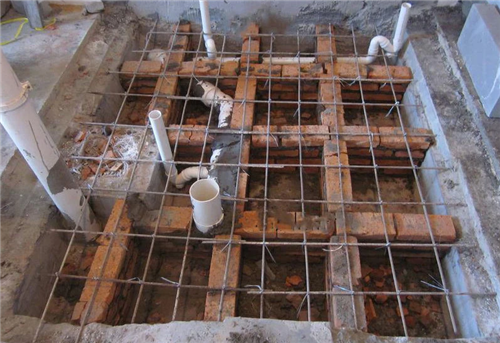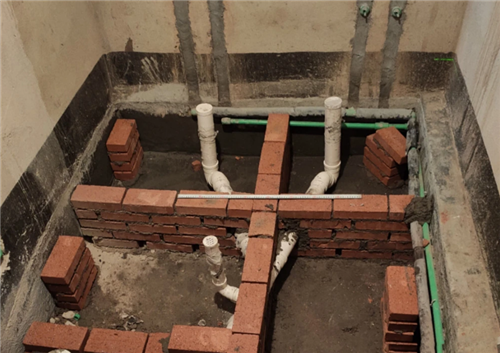
Home / Blog Center / Chargers / Construction of Sunken Bathrooms: Methods to Consider
Construction of Sunken Bathrooms: Methods to Consider
24/02/2025 | Hawkrown
When constructing a bathroom, numerous details need to be carefully addressed to avoid issues that could affect normal usage later on. The methods for creating a sunken bathroom include the following:

1. Pre-embedded Drainage Pipe Method
The pre-embedded drainage pipe method is a commonly used approach for implementing sunken bathrooms. This method involves embedding drainage pipes underground during the construction phase, followed by laying a cement floor above the drainage pipes to create a height difference, achieving the effect of a sunken bathroom. It is essential to design the floor and drainage outlet locations in advance to ensure that the drainage pipes can be accurately connected to the toilet and other plumbing fixtures.

The advantage of the pre-embedded drainage pipe method is that it simplifies construction and minimizes changes to the space, eliminating the need for extensive floor breaking. Moreover, since the drainage pipes are pre-embedded, effective waterproofing can be implemented to reduce moisture issues resulting from water seepage in the bathroom.
2. Floor Chiseling Method
The floor chiseling method is another way to achieve a sunken bathroom. In this construction process, the existing floor of the bathroom is first chiseled, followed by excavating to lower the floor to a desired depth, and finally repairing the floor to complete the sunken effect. This method is suitable for scenarios where the ground is hard or structurally complex.
The floor chiseling method offers considerable flexibility and can achieve deeper sinking effects. However, this method entails a larger scale of work, higher technical requirements, and may impact the surrounding environment during construction.
3. Suspended Method
The suspended method provides a solution to the drawbacks of both the floor chiseling method and the pre-embedded drainage pipe method. This approach involves constructing a frame above the bathroom to create a hollow space below, thus achieving the sunken bathroom effect. The implementation of this method is relatively straightforward, and it allows for significant adjustments in depth according to needs.
The advantage of the suspended method lies in its high flexibility, allowing for modifications based on actual requirements. However, this method places strong demands on the stability of the building structure, requiring a reliable ceiling load-bearing capacity, and necessitating effective waterproofing and sound insulation measures after construction.

4. Concrete Formwork Method
The concrete formwork method is a relatively new approach for implementing sunken bathrooms in recent years. This technique involves laying concrete on the bathroom floor and using templates to shape it into the desired form, with the final result being a sunken bathroom revealed after removing the mold.
The concrete formwork method enables personalized design, with diverse molds allowing designers to create various styles for the bathroom as per their preferences. This technique is also quick to implement and provides excellent waterproofing; however, attention must be paid to the strength and durability of the concrete used.

In summary, the article discusses the various methods for constructing sunken bathrooms. Each implementation method has its unique characteristics and applicable scenarios. When designing a sunken bathroom, one should consider the construction method based on actual conditions and plan accordingly to achieve the desired design for the sunken bathroom.


